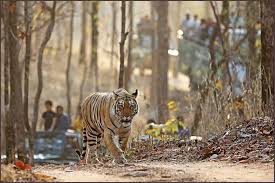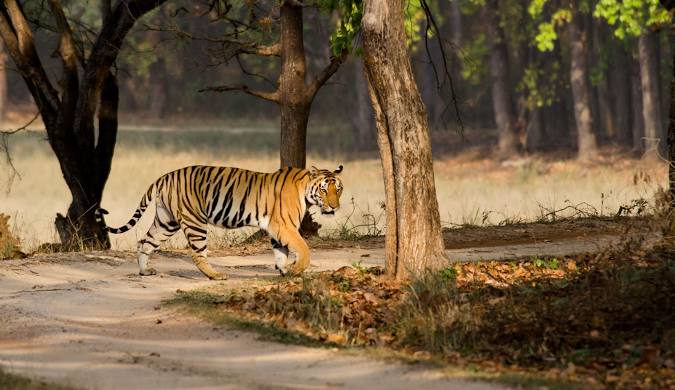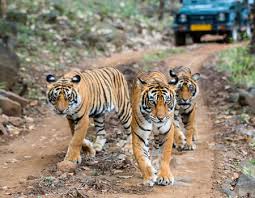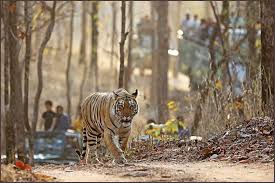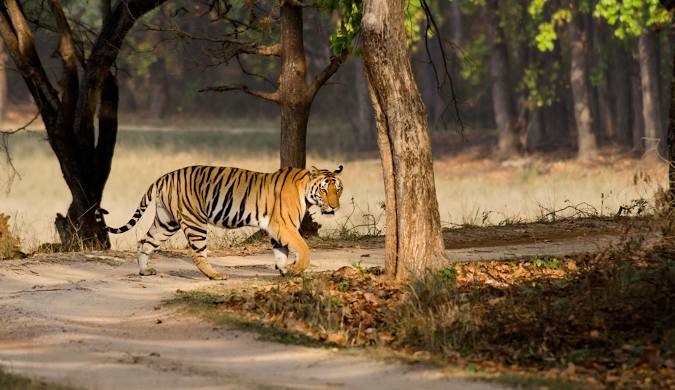PENCH NATIONAL PARK ( MH )
Pench National Park is one of the premier tiger reserves of India and the first one to straddle across two states - Madhya Pradesh and Maharashtra. The reference to Pench is mostly to the tiger reserve in Madhya Pradesh.[1] The portion of the reserve that is in Madhya Pradesh is nestled in the southern slopes of the Satpura range of Central India. Pench Tiger Reserve comprises the Indira Priyadarshini Pench National Park, the Pench Mowgli Sanctuary and a buffer. It is the same forest area portrayed in the famous "The Jungle Book" by Rudyard Kipling.[2] It derives its name from its life line - the River Pench. Inside the park, the river flows from North to South before going on to join the Kanhan River, while splitting the Park into two, and forming the boundary of Seoni District and Chhindwara District districts of Madhya Pradesh. The Meghdoot dam built across Pench River at Totladoh has created a large water body of 72 km2 out of which 54 km2 falls in M.P. and the rest in the adjoining state of Maharashtra. The Pench River which emerges from Mahadeo Hills of Satpuda Ranges and the various nallas and streams which drain into it, all flow through the forests of the protected area. The Satpuda ranges which bear the forests of the Protected Area act as an excellent watershed area for the Totladoh as well as lower Pench Reservoirs.
Jungle Info
This area was described as extremely rich and diverse in wildlife from the earliest records available on the 16th century Deogarh kingdom (Kumar 1989). The scenic beauty and the floral and faunal diversity of the Central Indian Highlands have been well documented by the British since the late 17th century, e.g. Forsyth's (1919) "Highlands of Central India" (first published in 1871). Thereafter, Sterndale (1887) and Brander (1923) have added to the knowledge on the distribution of the flora, fauna and the local inhabitants of this tract. The fictional works of Rudyard Kipling, The Jungle Book and The Second Jungle Book, are set in the region. Kipling himself never visited the area, instead basing his descriptions on other locations in India

Other Attractions
This area was described as extremely rich and diverse in wildlife from the earliest records available on the 16th century Deogarh kingdom (Kumar 1989). The scenic beauty and the floral and faunal diversity of the Central Indian Highlands have been well documented by the British since the late 17th century, e.g. Forsyth's (1919) "Highlands of Central India" (first published in 1871). Thereafter, Sterndale (1887) and Brander (1923) have added to the knowledge on the distribution of the flora, fauna and the local inhabitants of this tract. The fictional works of Rudyard Kipling, The Jungle Book and The Second Jungle Book, are set in the region. Kipling himself never visited the area, instead basing his descriptions on other locations in India
Nearby Gates
Nagpur - Pench | Drive to the National Park
-Meet our representative a t a pickup point in Nagpur and get transferred into a comfortable vehicle and proceed straight towards Pench National Park which is around 80 kms. On arrival at Pench, complete the checkin formalities at the resort and take some rest for sometime, Visit Panchdhara pottery village which is the nearby potter's village and experience it first hand the way it has been done since millennia. Return back to the hotel and enioy an overnight stay and dinner in the resort in Pench.
Pench National Park | Thrilling jungle safari
-Wake up in the morning, have your morning tea/coffee and get ready for an adventurous jungle safari at Turia Gate to siimply the best safari experience in Pench National Park. Witness the tigers, rare Swamp Deers, Sambar, Spotted Deer, Indian Gaur, Wild Dog and shy Leopards during the wild jungle safari. Get back to your resort from Jungle Safari Take a bath and enjoy your lunch. In the evening experience a thrilling safari at Wolf sanctuary night by driving through the silent woods at night and get a chance to spot the wolves over here. Return back to the resort, enjoy an overnight stay and dinner at the resort.
Pench - Nagpur | Bid Farewell
-Wake up in the morning, freshen up and take a village walk. After the Village walk, you will be dropped off at the resort to enjoy breakfast, complete the checkout formalities and get ready to head back home. Our tour representative will drive you back to Nagpur and drop you off at the railway station or airport. Conclude the trip with a bagful of memories on reaching your desired location.
Transportation By Bus
Transportation By Air
Transportation By Train
Latitude-Longitude
21.644416644757833, 79.24236831811453
Safari Timing
- Morning 05:30--09:30
- Afternoon 02:30--05:30
Seasonal Timing
- Summer 05:00--09:00
Weather
- Select Seasonal
Nearby Resorts

Olive Resort and Villas, Turia
Olive Resort, Turia PENCH tiger reserve, Awarghani, Turia, Madhya Pradesh 480881

Olive Resort Sillari Pench
Olive Resort Sillari Pench, Sillari Gate, Pench Tiger Reserve Maharashtra, Paoni, Ramtek, Tah, Khursapar Sitapur, Pauni, Maharashtra 441401

Tuli Veer Bagh Resort & Spa - Bandra Resort
Tuli Veer Bagh Resort & Spa - Bandra Resort, Bandra , Deolapar, NH 44, Nagpur, Maharashtra 441401
Flora and Fauna
Flora
Teak is a ubiquitous species in the region, with a presence ranging from a sporadic distribution in most parts of the study area to localized teak-dominated patches. Teak (Tectona grandis), and associated species such as Madhuca indica, Diospyros melanoxylon, Terminalia tomentosa, Buchanania lanzan, Lagerstroemia parviflora, Ougeinia dalbergoides, Miliusa velutina and Lannea coromandalica, occur on flat terrain. The undulating terrain and hill slopes have patches of Mixed Forest dominated by Boswellia serrata and Anogeissus latifolia. Species like Sterculia urens and Gardenia latifolia are found scattered on rocky slopes. Bamboo forests occur in the hill slopes and along streams. Some of the open patches of the Park are covered with tall grasses interspersed with Butea monosperma and Zizyphus mauritiana. Evergreen tree species like Terminalia arjuna, Syzygium cumini and Ixora parviflora are found in riparian vegetation along nullahs and river banks. Cleistanthus collinus dominant patches are also found in some parts of the Tiger Reserve. The tracts that previously formed pastures of villages (subsequently relocated outside the National Park limits) now constitute open grassy meadows much favoured by the gregarious herbivores. With the approach of summer, the extent of open areas of the Reserve gradually increases with the recession of reservoir's waters.
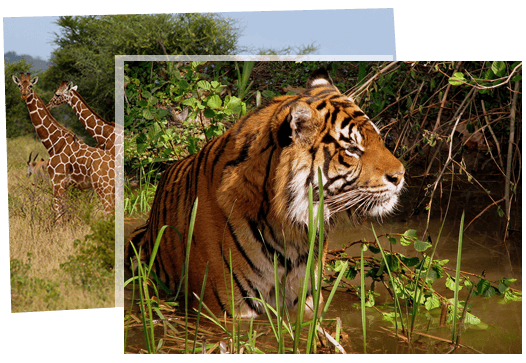
Fauna
Zoogeographically, the Reserve falls in Oriental region. The carnivore fauna is represented by the Bengal tiger (Panthera tigris tigris), Indian leopard (Panthera pardus fusca), dhole (Cuon alpinus), jungle cat (Felis chaus), and small Indian civet (Viverricula indica). Wolves (Canis lupus pallipes) occur on the fringes and outside the Reserve limits. Striped hyena (Hyaena hyaena), sloth bear (Melursus ursinus), golden jackal (Canis aureus), and common palm civet (Paradoxurus hermaphroditus) make up the rest of the carnivore fauna of the Reserve. Chital (Axis axis), sambar (Cervus unicolor), gaur (Bos gaurus), nilgai (Boselaphus tragocamelus), wild pig (Sus scrofa cristatus), Indian muntjac (Muntiacus muntjac) and chowsingha (Tetraceros quadricornis), are the wild ungulate species found in the study area. Chital, sambar, nilgai and wild pigs are found all over the Tiger Reserve. With the distribution of water governing their movement patterns to a great extent, gaur migrate down from the hills during the dry season and occupy the forests along the Pench River and other sources of water, and migrate back to the hill forests during the monsoon. Nilgai are found mostly in a few open areas, along forest roads, scrub jungles and fringe areas of the Reserve. Chowsingha are more localized to the greatly undulating areas of the Reserve. Barking deer are seen infrequently in moist riverine stretches. Chinkara (Gazella bennetti) are infrequently seen on the open areas bordering and outside the Buffer Zone of the Reserve (e.g. Turia, Telia, and Dudhgaon). The common hanuman langur (Semnopithecus entellus) and rhesus macaque (Macaca mulatta) represent the primate fauna of the area. The Indian porcupine (Hystrix indica), two species of mongoose viz. common mongoose (Urva edwardsii) and ruddy mongoose (Urva smithii), and black-naped hare (Lepus nigricollis nigricollis) also occur in this Tiger Reserve.
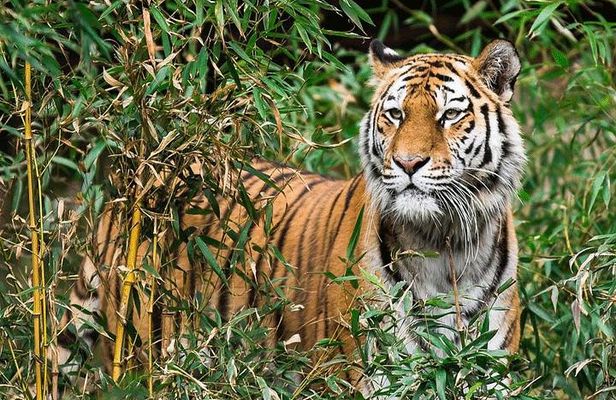
Activity
Runi Jhuni Walking Trail
Experiencing nature on foot is an extraordinary encounter altogether. Runi Jhuni walking trail inside the Pench National Park, from Karmajhiri gate, is a 3-4 km nature trail that gives the guests a perfect opportunity to experience nature and wildlife from close quarters. Accompanied by experienced naturalists, this walking trail ensures an intimate understanding of nature and the various flora and fauna. Alarm calls, fresh animal tracks, including tiger pug marks, scats (droppings) can be spotted in this serene jungle walk. Langurs, deers, wild boars, jungle fowls, a variety of birds, and flora are the attractions of this nature trail.
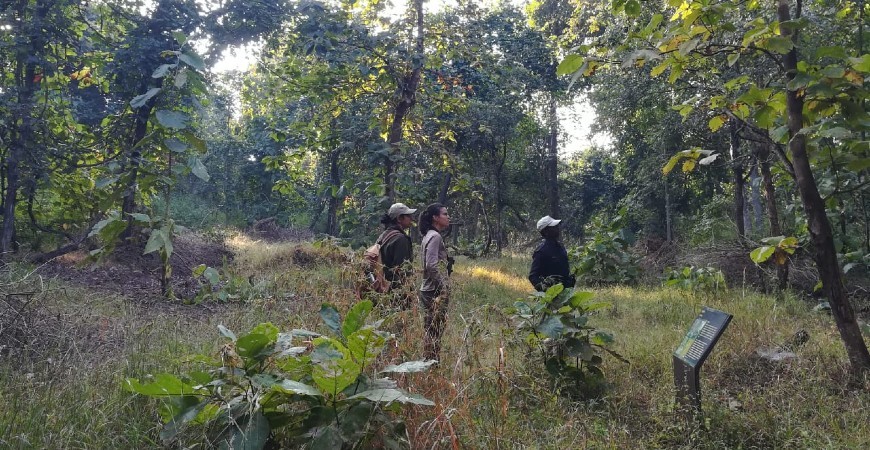
Tribal Bazaar and Haat
Enjoy a guided tour, or a leisurely walk, or a bicycle ride to the local villages and weekly haats (bazaars). You can have your fill of indigenous crafts and products of the area and more likely than not, get invited to visit a villager’s home to share a cup of tea.
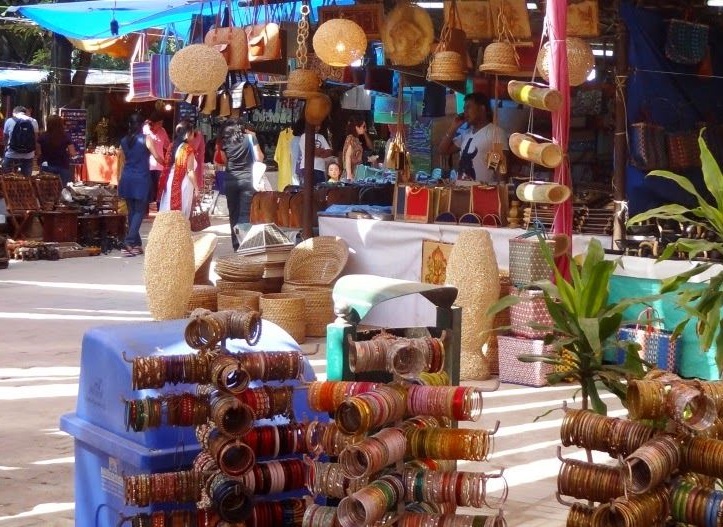
Booking Policies
The Reserve
The Reserve gets its name from the Pench River that flows, north to south, 74 km through the reserve. The Pench River bisects the original Pench core reserve into two nearly equal parts; the 147.61 km

